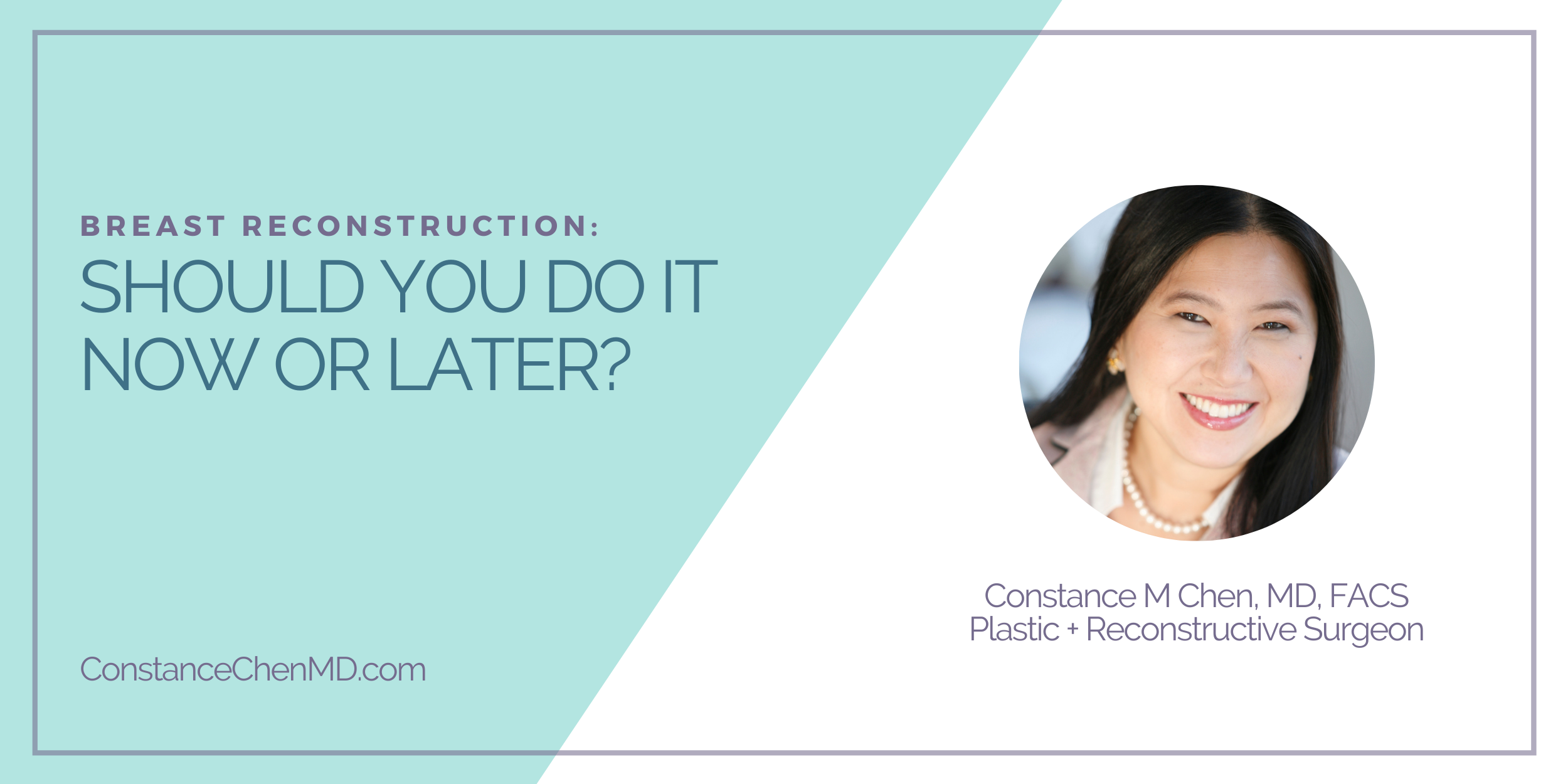Breast Reconstruction: Now or Later?
Melissa Chefec
By Dr. Constance M Chen
In the midst of the emotional turmoil of realizing that she has cancer, women are faced with critical decisions about treatment. For a woman who must undergo mastectomy, the predicament is further complicated by the array of options available and the decisions she must make about whether, when and how to have breast reconstruction. There are two types of breast reconstruction and multiple options for each: implants and reconstruction that uses the body's own tissue, known as autologous tissue reconstruction. Either type can be performed immediately, or months or even years later.
Immediate Reconstruction
The most important advantages of immediate reconstruction is a superior aesthetic outcome and minimizing the emotional trauma from losing a breast. It is very helpful for many women to wake up from a mastectomy and look down to see that she still has breasts. Immediate reconstruction that preserves the nipple, areola, and skin is the gold standard in breast reconstruction. Whether performed with a breast implant or autologous tissue, the resulting breast shape after nipple-sparing mastectomy is very similar to the original. When performed with autologous tissue, the breast is soft, warm and natural, and it is also possible to reconnect nerves to restore feeling.
One disadvantage of immediate reconstruction is that the hospitalization and recovery period may be longer than with mastectomy alone. For patients who need chemotherapy, it may delay treatment until healing is complete.
Delayed Reconstruction
Delaying reconstruction reduces the recovery time after mastectomy. If a patient has a high-grade tumor or advanced disease, she may want to delay reconstruction so that she does not delay her chemotherapy or radiation therapy. Either type of reconstruction – implants or with the woman's own tissue – can be performed at any time after healing from mastectomy is complete and after chemotherapy and radiation therapies, if those are required.
The biggest disadvantage of delayed reconstruction is an inferior aesthetic result and the need for additional surgery. The reconstruction itself may be more difficult because the breast skin has already been resected, so it will be necessary to make up for the lost skin. There will likely be a need for follow-up procedures to improve the cosmetic result.
One important factor that will affect the timing of reconstruction is whether the woman will need radiation therapy after her mastectomy. Radiation therapy can adversely affect the aesthetics of any breast reconstruction. But if a woman is committed to undergoing autologous tissue reconstruction, she may want to delay placing the natural tissue until after her radiation. One option is to undergo a delayed immediate reconstruction, in which a tissue expander is placed at the time of mastectomy to save the breast skin, and then the autologous reconstruction is performed after the radiation is completed. Women who know they will need post-mastectomy radiation or who are at high risk of post-surgery pathology dictating the need for radiation should work with their oncologist and plastic surgeon to determine the best time to perform the final reconstruction.
The best aesthetic result and the most sustained level of patient satisfaction is with immediate autologous tissue reconstruction performed at the same time as the mastectomy. Autologous tissue reconstruction produces a soft, natural breast that looks and feels like the breast lost to mastectomy, and by performing the reconstruction immediately, we can often preserve the nipple and areola and much of the breast skin to shape a new breast. There are advantages and disadvantages to immediate and delayed reconstruction, however, and there are many personal and medical reasons that drive the decision for each woman.
Breast reconstruction is an integral part of the comprehensive management of breast cancer. We've made remarkable advances in our ability to reconstruct a breast that closely resembles the breast lost to mastectomy and we are able to offer women a wide range of options to suit their medical needs and personal preferences, including the choice of when to have reconstruction. Every breast cancer patient has individual needs and wants and we can help her get the care that is right for her.

